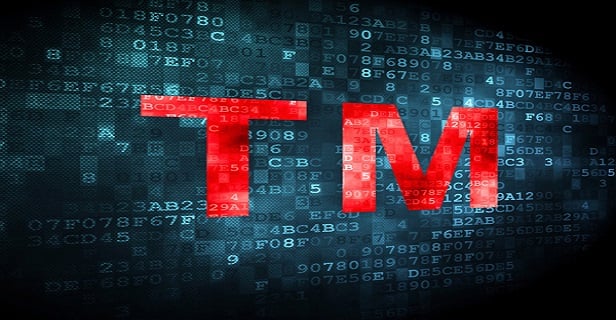Features

New Decisions In Disputes Over Titles Reinforce 'High Bar' In Proving Public Was 'Explicitly Misled'
When it comes to expressive content, disputes over trademark rights in titles of creative works are commonly fought under the federal Lanham Act. Many of these battles play out in courts in the U.S. Circuit Court of Appeals for the Ninth Circuit, which has well-developed legal guidelines on the subject — many of them from lawsuits that have arisen in the entertainment industry.
Features

WTF? The Board Weighs In on Failure to Function Refusals
Many trademark practitioners have noted the USPTO's recent penchant for issuing refusals to register trademarks on the ground of failure to function as a trademark. The Trademark Trial and Appeal Board picked a colorful case to set precedent and provide some initial guidance on how it will evaluate failure-to-function refusals going forward.
Columns & Departments

IP News
Federal Circuit: Trade Dress Imitation In the Ninth Circuit
Features

Federal Judge Takes Aim at Legal Process for Targeting Counterfeit Merchandisers
The rebound in concert tours and ticket revenues as 2022 has unfolded gives the live events industry hope for a strong 2023, too. For many tours, though, it's income from merchandise that makes the tour profitable. Thus, the rise in the number of artists touring also means a parallel resurgence in the activities of counterfeit-merchandise sellers and renewed efforts by the industry to battle its long-time problem with the sale of counterfeit merchandise near event venues.
Features

IP Rights In the Metaverse
The metaverse, an immersive virtual experience building on the Internet and the physical world, has become a prominent force in branding and marketing for companies struggling to keep up in an ever so globalized economy. Parallel to this digital expansion has been a surge of intellectual property issues.
Features

Protecting a Trademark Licensor's Rights In a Bankruptcy Case
A recent bankruptcy case from the District of Delaware underscores the need for a trademark licensor to be alert to filings made in its licensee's bankruptcy case that may require prompt action by the licensor to protect its valuable rights under a license agreement.
Features

Digital Advertising: Customer Confusion and Trademark Infringement
In the absence of a federal statutory scheme specifically aimed at digital advertising practices, the courts have focused on consumer-facing issues covered by existing law, such as privacy, transparency, and deceptive or misleading advertising practices. But digital advertising technology can also present new challenges in copyright and trademark protection.
Features

Quebec's Bill 96 and Trademarks: Product Packaging and Labelling
The modifications brought by the Quebec's Bill 96 will have a far-reaching impact on how businesses use trademarks on product packaging, labelling, public signage and in commercial advertising. This article is Part One of a two-part series on Bill 96 and trademarks and covers the effects as they relate to product packaging and labelling and how best to comply with these new provisions.
Features

Proper Notice of Trademark Rights: Using Trademark Symbols for Three-Dimensional Packaging and Product Designs
Among the most common questions trademark attorneys are asked is what the differences are between the symbols ®, TM, and SM. When should such symbols should be used? Where should they appear? How frequently? Do they even need to be used at all?
Features

Brands In the Metaverse: What You Need to Know
While it is still unknown how the metaverse will take shape, lawyers advising brands should familiarize themselves with the opportunities it presents, the risks involved, and strategies to consider for enhancing and protecting a client's brand.
Need Help?
- Prefer an IP authenticated environment? Request a transition or call 800-756-8993.
- Need other assistance? email Customer Service or call 1-877-256-2472.
MOST POPULAR STORIES
- The DOJ's Corporate Enforcement Policy: One Year LaterThe DOJ's Criminal Division issued three declinations since the issuance of the revised CEP a year ago. Review of these cases gives insight into DOJ's implementation of the new policy in practice.Read More ›
- Use of Deferred Prosecution Agreements In White Collar InvestigationsThis article discusses the practical and policy reasons for the use of DPAs and NPAs in white-collar criminal investigations, and considers the NDAA's new reporting provision and its relationship with other efforts to enhance transparency in DOJ decision-making.Read More ›
- The Roadmap of Litigation AnalyticsLitigation analytics can be considered a roadmap of sorts — an important guide to ensure the legal professional arrives at the correct litigation strategy or business plan. However, like roadmaps, litigation analytics will only be useful if it's based on data that is complete and accurate.Read More ›
- The DOJ's New Parameters for Evaluating Corporate Compliance ProgramsThe parameters set forth in the DOJ's memorandum have implications not only for the government's evaluation of compliance programs in the context of criminal charging decisions, but also for how defense counsel structure their conference-room advocacy seeking declinations or lesser sanctions in both criminal and civil investigations.Read More ›
- Understanding the Potential Pitfalls Arising From Participation in Standards BodiesChances are that if your company is involved in research and development of new technology there is a standards setting organization exploring the potential standardization of such technology. While there are clear benefits to participation in standards organizations — keeping abreast of industry developments, targeting product development toward standard compliant products, steering research and intellectual property protection into potential areas of future standardization — such participation does not come without certain risks. Whether you are in-house counsel or outside counsel, you may be called upon to advise participants in standard-setting bodies about intellectual property issues or to participate yourself. You may also be asked to review patent policy of the standard-setting body that sets forth the disclosure and notification requirements with respect to patents for that organization. Here are some potential patent pitfalls that can catch the unwary off-guard.Read More ›
